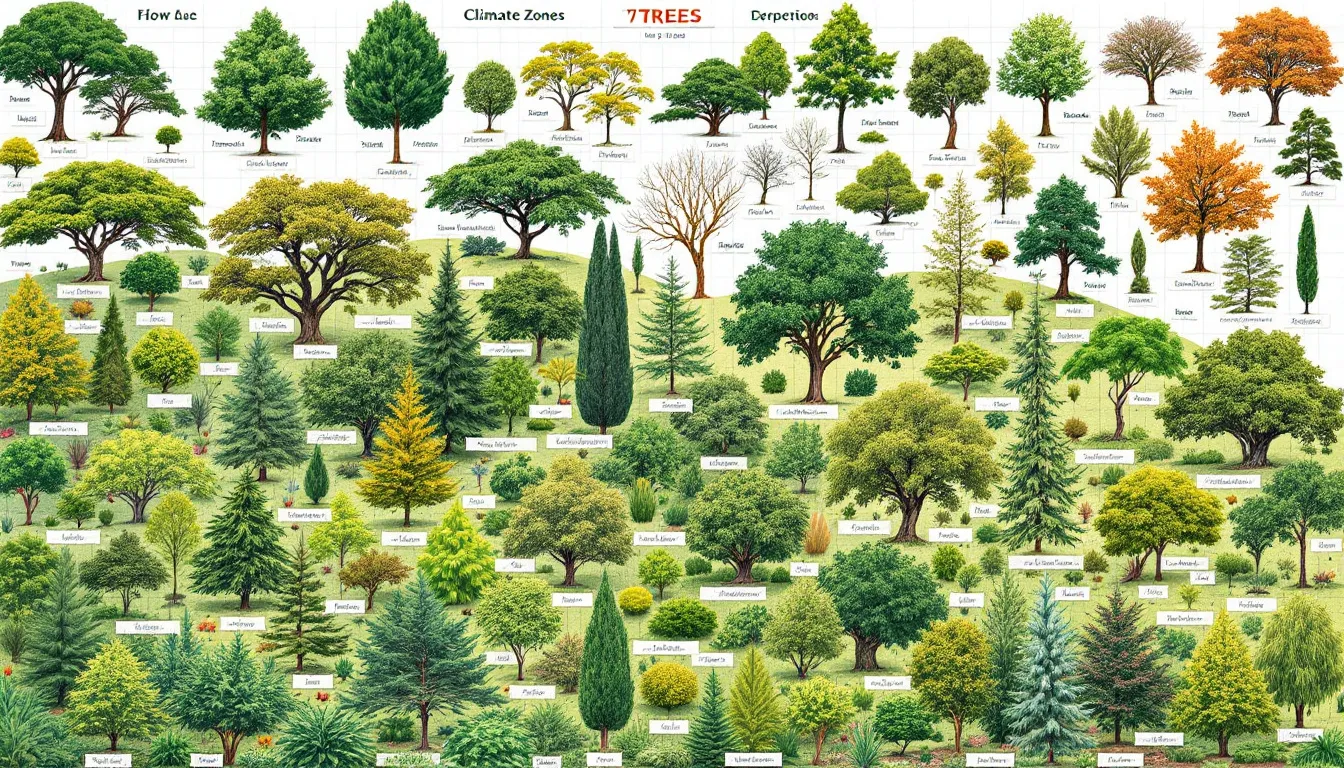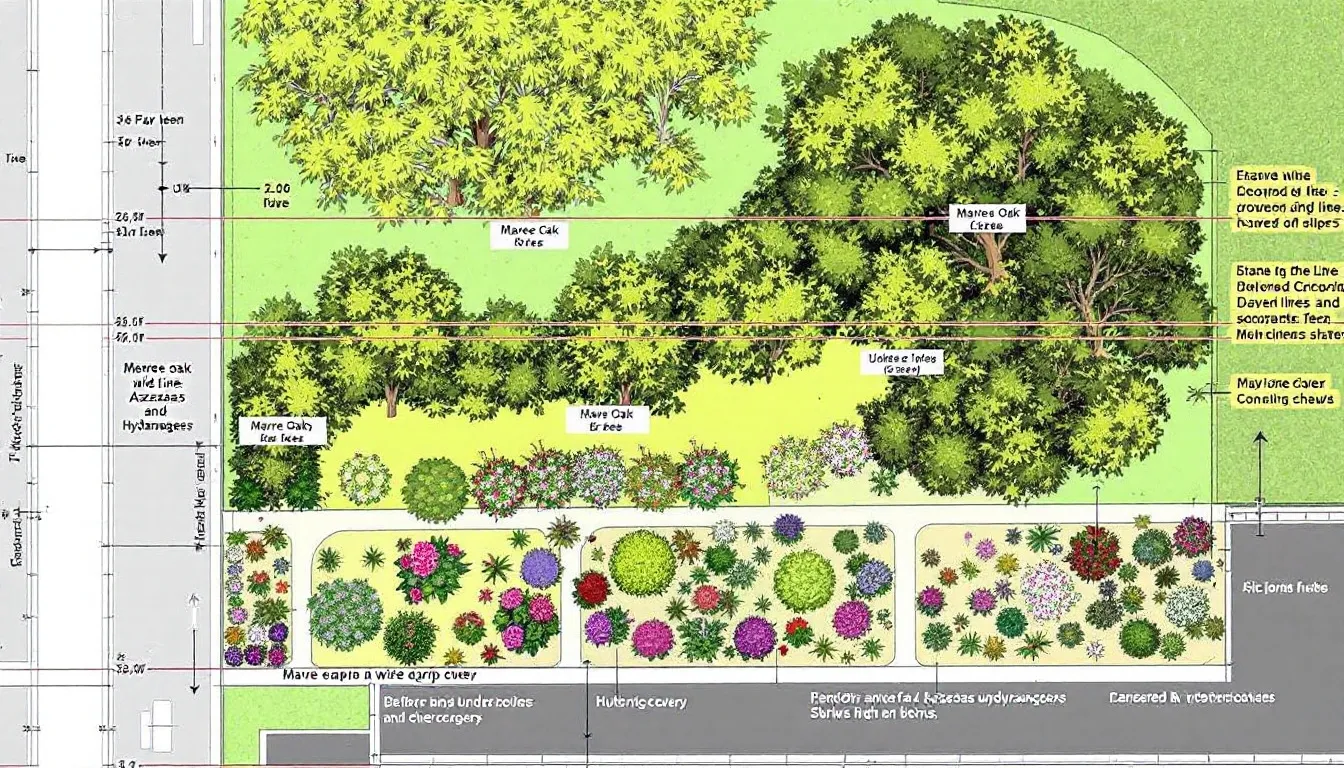
Creating a thriving canopy layer in your yard, garden, or community space requires more than just planting a few tall trees. It’s about selecting the right tree species for your climate zone, understanding root systems, managing summer heat, and ensuring long-term health for both the trees and the ecosystem they support. This guide dives deep into canopy layer mastery, covering everything from deciduous trees like red maples and honey locusts to native plants that thrive in your soil conditions.
Introduction to Canopy Trees
Canopy trees are the backbone of any sustainable landscape. These mature trees create shade, regulate microclimates, and improve air quality while offering habitat for a diverse population of birds, insects, and pollinators.
Key Benefits of Tree Canopies:
-
Reduce stormwater runoff by intercepting rainfall.
-
Mitigate the urban heat island effect by lowering surrounding air temperatures.
-
Increase property values for residential properties.
-
Enhance community wellbeing by creating shaded, cooler, and greener spaces.
“The best time to plant a tree was 20 years ago. The second best time is now.” – Chinese Proverb
For deeper learning on urban forestry, check out Arbor Day Foundation and US Forest Service Canopy Research.
Understanding Tree Species
When choosing canopy trees, understanding the differences between deciduous trees and evergreen trees is critical.
-
Deciduous Trees: Examples include red maple (Acer rubrum) and honey locust (Gleditsia triacanthos). They provide summer shade and spectacular fall colors, making them ideal for four-season landscapes.
-
Evergreens: Examples include pines and cedars. They offer year-round shade, crucial for energy-efficient homes in hot climates.
Factors to Consider in Tree Selection:
-
Mature height & spread (to prevent conflicts with utility lines).
-
Branch structure & strength (for withstanding heavy rains or winds).
-
Soil & moisture preferences (some trees thrive in full sun, others in partial shade).
Benefits of Shade Trees
Shade trees do far more than cool your yard. According to the U.S. Department of Energy, well-placed shade trees can reduce cooling costs by up to 30% in summer.
Ecological & Human Benefits of Shade Trees:
-
Reduce ground-level temperatures by up to 20°F.
-
Provide habitat and food for beneficial insects and birds.
-
Improve air quality by filtering pollutants.
-
Support pest management, reducing the need for synthetic pesticides.
Case Study: In Sacramento, California, a large-scale urban forestry program showed that every $1 invested in tree canopy returned $2.70 in energy savings, cleaner air, and stormwater reduction.
Designing a Canopy Layer

Designing a cohesive tree canopy involves more than randomly planting tall trees.
-
Spacing: Allow proper distance based on drip line and root zone to avoid overcrowding.
-
Layering: Combine tall canopy trees (like oaks) with shrubs, herbs, and groundcovers to create a multi-tier ecosystem.
-
Utility Awareness: Avoid planting directly under utility lines or too close to pavement.
Pro Tip: Plant shade-loving shrubs such as azaleas or hydrangeas under your canopy for a healthy understory.
Root Systems and Soil Health
A healthy root system ensures stability and long-term canopy health.
-
Deep roots: Anchor tall trees and access underground water.
-
Soil preference: Some trees prefer acidic soil (maples), while others thrive in alkaline soils (honey locust).
-
Moisture needs: Overwatering can suffocate roots; under-watering stunts growth.
Soil Health Boosters:
-
Mulch around the base (not against the trunk).
-
Compost to improve organic matter.
-
Mycorrhizal fungi inoculation for stronger root–soil relationships.
Selecting the Right Tree for the Right Place
Choosing the right tree ensures survival and low maintenance:
-
Hardiness Zone: Always match tree species to your USDA hardiness zone (zone map here).
-
Mature height: Prevent conflict with utility lines.
-
Branching habits: Wide-spreading oaks suit large yards, while narrow columnar maples suit smaller gardens.
-
Native plants: Local species thrive with less care and support native wildlife.
Example: In Zone 7 (parts of North Carolina, Tennessee, Virginia): Red Maple, Pin Oak, and Honey Locust flourish due to their adaptability.
Planting in the Root Zone
Planting near established trees requires careful planning.
-
Use small-rooted plants like herbs, shallow shrubs, or shade-tolerant flowers.
-
Best planting times: early spring or fall for maximum root establishment.
-
Water deeply, mulch generously, and avoid compacting soil in the root zone.
Managing Summer Heat with Canopy Trees
Summer heat can be oppressive, but canopy trees reduce temperature spikes dramatically.
-
Plant deciduous trees on the western sides of buildings to block afternoon sun.
-
Use evergreens as windbreaks in winter while offering shade in summer.
-
Supplement with shade sails or pergolas until trees mature.
Data Point: According to the EPA, mature shade trees can lower nearby surface temperatures by up to 45°F.
Creating a Sustainable Ecosystem
The best canopy layers are diverse ecosystems:
-
Mix tall trees, shrubs, and groundcovers.
-
Add pollinator plants like lavender and milkweed.
-
Use native stones and logs for natural habitats.
“Diversity breeds resilience” – Ecologists note that biodiversity in canopy layers makes them more resistant to pests, diseases, and climate extremes.
Maximizing Space and Resources
For urban landscapes with limited planting space:
-
Select compact or dwarf trees (like dwarf maples).
-
Incorporate rain gardens and bioswales to manage heavy rains.
-
Use vertical structures like trellises for vining plants.
The Importance of the Right Place
Location determines tree survival:
-
Avoid areas with poor drainage.
-
Never plant tall species under utility lines.
-
Ensure at least 3–5 feet away from pavement to protect roots.
Tree Care and Maintenance
Essential Tips for Healthy Trees:
-
Water thoroughly during the first year after planting.
-
Mulch to suppress weeds and regulate soil temperature.
-
Prune regularly to remove diseased or weak branches.
-
Monitor for pests and diseases.
Community Involvement and Education
Community forestry strengthens neighborhoods:
-
Partner with local gardening clubs and conservation groups.
-
Organize tree-planting events in parks and schools.
-
Offer workshops on pruning, soil care, and pest management.
Explore TreePeople for community-led urban forestry inspiration.
Conclusion and Future Directions
Canopy layer mastery is both an art and science. By selecting the right tree for the right place, considering root systems, climate, and planting space, and involving your community, you can create a resilient canopy layer that supports both humans and wildlife.
Final Thoughts on Canopy Layer Mastery

Achieving tree canopy success requires:
-
Deep understanding of tree biology and local ecosystems.
-
Careful planning for mature height, root systems, and site conditions.
-
Commitment to long-term maintenance and community stewardship.
A thriving canopy is more than shade—it’s a legacy for future generations. Plant wisely, and your landscape will flourish year after year.
